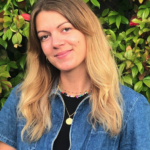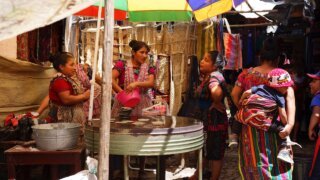About the Geography of Guatemala
Capital : Guatemala.
Area: 108 930 km²
Borders : With Mexico (1,684 km) and Belize (266 km) to the North, Honduras (256 km) and El Salvador (203 km) to the South.
Coasts: 250 km of Pacific coastline to the West and 150 km of coastline the Caribbean Sea to the East.
Highest Point: Tajumulco volcano (4,220 meters above sea level)
Time difference: Guatemala is on Central Standard Time (CST). The country does not adhere daylight savings time. Guatemala is six hours behind Greenwich Mean Time (GMT).
Currency: 1 euro = 8,55 Quetzales ; 1 USD =7,74 Quetzales
Cities: Guatemala City is the main city in the country, with 1 million inhabitants. Urban areas includes Mixco, Villa Nueva, which exceed 4 million inhabitants. The other main cities of the country are Quetzaltenango (150,000), San Juan Sacatepéquez (140,000).
Population of Guatemala
Guatemala is the most populous country in Central America.
Population: 17.1 million inhabitants (2018)
Density: 155 inhabitants / km2
Life expectancy: 72.5 years
Birth Rate: 2,90 children
Rural Population: 50%
Literacy Rate: 80%
Ethnic composition : 60% “mestizo” (Indian-European), 38% Indian of Mayan origin, 2% Garifuna. K’iche (9%) and Cakchiquel (8%), among other Mayan indigenous populations.
Languages: Spanish is the only official language in the country (60%), but it is not spoken by all ethnic groups. There are 20 languages of Mayan origin, especially spoken on the plateau and in rural areas. The most common are K’iche ’, Cakchiquel, and Q’eqchi, which bring together nearly 3 million speakers. Garifuna, African Caribbean origin, is spoken on the Caribbean coast, and Xinca of non-Mayan Native American origin is spoken in the southeast of the country.
Guatemalan Politics
Regime: Democratic. The president is elected for 4 years, he is both the head of state and government. Alejandro Giammattei was elected president in January 2020.
National holidays: September 15. It is celebrated the proclamation of independence of Central America.
National Flag and Emblem: in the foreground is the Quetzal bird, a symbol of freedom, and a scroll representing the independence of Central America from Spain. In the background, two rifles remind the defense of the country, and two crossed swords symbolize honor. The whole is framed by a laurel wreath representing victory.
Religion : Guatemala has no official religion. The population is 50% Catholic, 40% Protestant, 10% other. Protestantism is in the process of becoming the majority, especially in rural areas. There is also the largest Orthodox community in Latin America made up of 300,000 people. Christianity remains strongly imbued with ancestral indigenous practices.
Economic facts
With a GDP of nearly $70 billion USD, Guatemala is the largest economy in Central America. The country has experienced solid growth for ten years (approx. + 4% per year).
The agricultural sector is the most important economic activity, accounting for almost a quarter of GDP and 75% of national exports. Guatemala produces notably coffee, bananas, sugar, corn. It is also the world’s leading exporter of nutmeg. Tourism is also a fundamental source of currency and has great development potential.

















